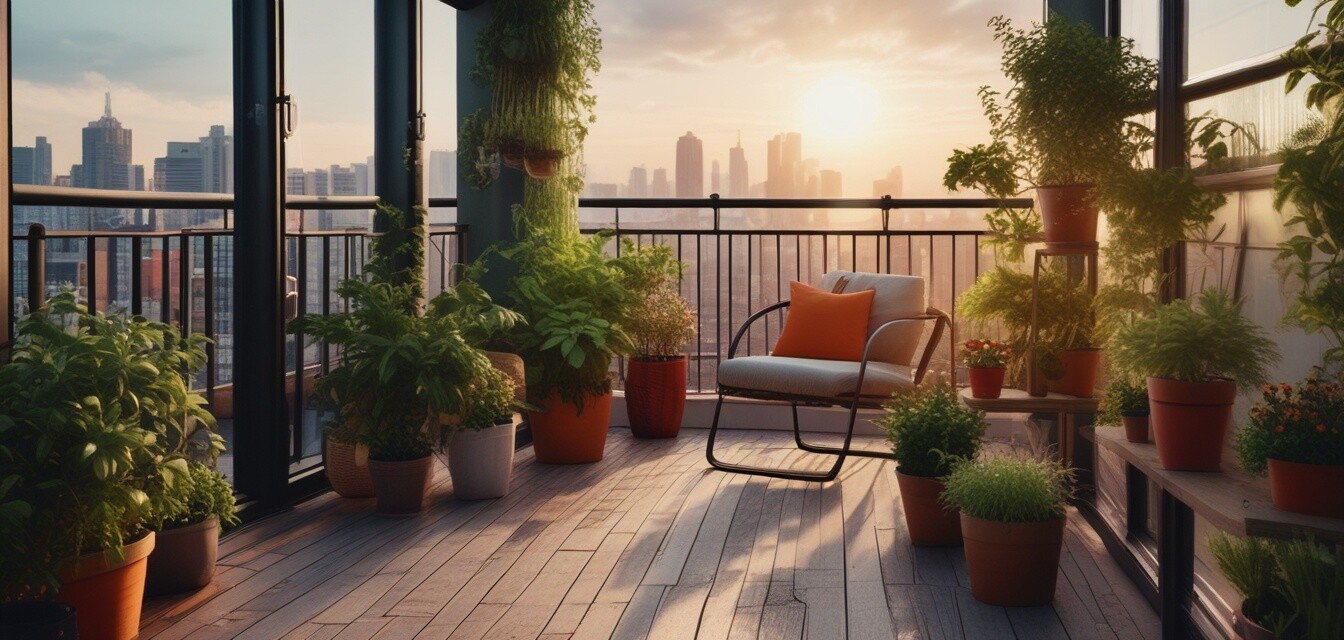
Exploring the Benefits of Biophilic Design
Key Takeaways
- Biophilic design connects nature with urban living.
- Incorporating plants can improve mental well-being.
- Compact gardening solutions are ideal for urban balconies.
- Vertical gardening enhances space utilization.
- Sustainable practices promote eco-friendliness.
In an increasingly urbanized world, the concept of biophilic design emerges as a beacon that encourages us to reconnect with nature. This article dives into biophilic design principles specifically tailored for urban gardening, providing insights into how these principles can be effectively applied to balcony spaces. With a focus on embracing natural elements, we will explore how urban dwellers can transform their balconies into flourishing green spaces.
What is biophilic design?
Biophilic design refers to the incorporation of natural elements into architectural and design practices to promote connectivity to nature within built environments. This approach aims to create spaces that improve well-being, enhance creativity, and even boost productivity. In urban gardening, biophilic design principles manifest through the selection of plants, layout, and sustainable practices.
Benefits of biophilic design in urban gardening
Applying biophilic design principles to balcony spaces offers numerous benefits. Here are some of the key advantages:
| Benefit | Description |
|---|---|
| Mental well-being | A green balcony can reduce stress and enhance mood through everyday exposure to nature. |
| Improved air quality | Plants naturally filter air toxins, providing a healthier environment. |
| Space optimization | Vertical gardens and innovative planting methods maximize limited balcony spaces. |
| Enhanced biodiversity | Creating a habitat for various species contributes to local biodiversity. |
| Eco-friendly practices | Urban gardening promotes sustainability and reduces carbon footprints. |
Essential elements of biophilic design for balconies
When considering biophilic design for your balcony garden, focus on the following elements:
- Natural materials: Use wood, stone, or recycled materials to create a natural look.
- Plant variety: Incorporate a mix of flowering plants, herbs, and greens for visual and sensory diversity.
- Water features: Consider adding small fountains or irrigation systems to create soothing sounds and enhance humidity.
- Natural light: Maximize sunlight by positioning plants correctly to benefit from natural light.
- Vertical structures: Use trellises or wall planters to take advantage of vertical space.
Implementing biophilic design on your balcony
To effectively implement biophilic design in your balcony garden, follow these practical steps:
- Survey your space: Assess your balcony's size, light availability, and wind exposure.
- Choose appropriate plants: Opt for low-maintenance plants suited to your climate and conditions.
- Design your layout: Arrange plants for aesthetic appeal while considering accessibility and care routines.
- Incorporate eco-friendly systems: Set up a rainwater collection system for sustainable watering.
- Layer your garden: Use varying heights and textures to create a visually engaging space.
Innovative trends in balcony gardening
The evolution of urban gardening is influenced by emergent trends that align with biophilic principles. Here are some noteworthy trends:
| Trend | Description |
|---|---|
| Vertical gardening | Maximizes limited space using wall-mounted plant systems. |
| Hydroponics | Soil-less gardening that uses nutrient-rich water solutions for plant growth. |
| Smart gardening solutions | Utilizing technology for automated watering and monitoring systems. |
| Community gardens | Shared gardening spaces that foster connection and engagement among residents. |
| Native plants | Incorporating local flora that requires minimal care and supports local wildlife. |
Conclusion
Biophilic design principles offer an exciting way for urban dwellers to connect with nature through balcony gardening. Embracing this approach not only enhances the aesthetic appeal of small spaces but also contributes to mental and environmental well-being. By incorporating greenery and sustainable practices, you can turn your balcony into an oasis that nourishes both the soul and the planet.
Tips for beginners
- Start small: Begin with a few pots of herbs to build confidence.
- Research: Learn about plants that thrive in your local climate and conditions.
- Join online communities: Engage with other urban gardeners for support and inspiration.
- Keep it simple: Choose easy-care plants until you're comfortable with more complex varieties.
- Date your plants: Regularly journal your plant growth and care to track progress.
Pros
- Encourages a connection to nature.
- Enhances aesthetic appeal and tranquility.
- Promotes sustainability and eco-friendliness.
- Improves air quality and mental health.
Cons
- Initial setup can be costly.
- Maintenance can be time-consuming for some plant types.
- Requires knowledge of plant care.
- May not be possible in certain lease agreements.
For more information on making your balcony garden flourish, check out our Gardening Tips section.
Stay on the cutting edge of balcony design trends by visiting our News and Trends page.
Our Balcony Accessories can also enhance your gardening experience while maximizing space.
Interested in container gardening? Discover our items at Container Plants for innovative solutions.
Finally, for the best practices in vertical gardening, explore our guide here: Vertical Gardening.